Cannabis grow room ventilation: Full guide
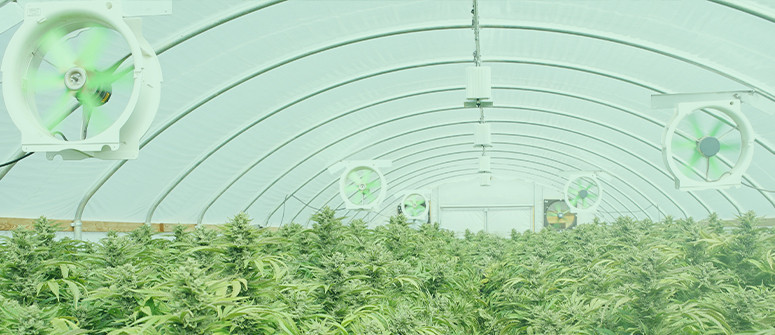
Like humans, cannabis plants need fresh air in order to grow and to be productive. Keep reading to learn all about ventilating your indoor grow tent, closet, or greenhouse—including what equipment to use, and how to put it all together.
Contents:
Are you interested in learning how to properly ventilate your cannabis grow room? In this article, we will guide you through the process of setting up an effective ventilation system for your indoor grow space.
Why is ventilation important for growing weed?
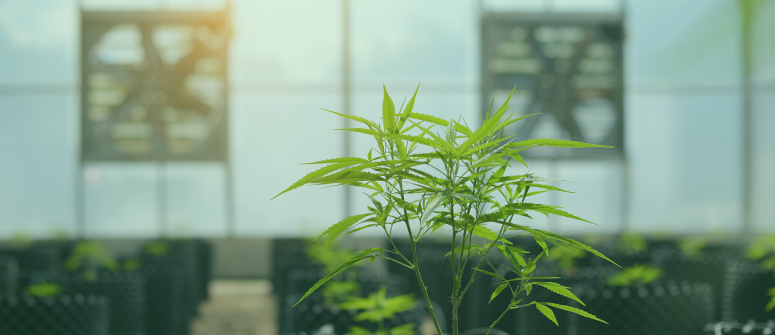
When it comes to growing cannabis, ventilation can make a world of difference. First and foremost, a properly ventilated grow space helps to regulate temperature and humidity, which directly impact the health and development of your plants. Cannabis likes to grow in warm, slightly humid conditions, and using ventilation systems to maintain these conditions will encourage healthy plant growth and ultimately higher-quality yields.
Furthermore, a lack of ventilation can cause a buildup of stagnant air and heat. In turn, this can cause temperature and humidity levels in your tent/room to rise, which can attract pests and pathogens into the space. Mould and mildew, for example, thrive in warm, humid conditions and, especially during flowering, can completely destroy your harvest. Meanwhile, dry and warm grow room temperatures can also attract a host of common cannabis pests (especially spider mites), including:
- Spider mites
- Thrips
- Whiteflies
- Fungus gnats
- Aphids
During the flowering period, heat and humidity can create the perfect environment for Botrytis—the main culprit of bud rot. Pythium and Fusarium, two other genera of fungi that typically affect cannabis plants, also grow in these conditions and can cause devastating damage to a plant’s roots, leaves, and stems.
By ensuring that your grow room has adequate ventilation, you can create a healthy environment for your cannabis plants to flourish in. Depending on the size of your grow space, as well as the weather in your local region, how you choose to ventilate your grow room will vary. Further down in this article, we’ll walk you through the basics of ventilating grow tents, greenhouses, and more.
Equipment needed to ventilate a grow space
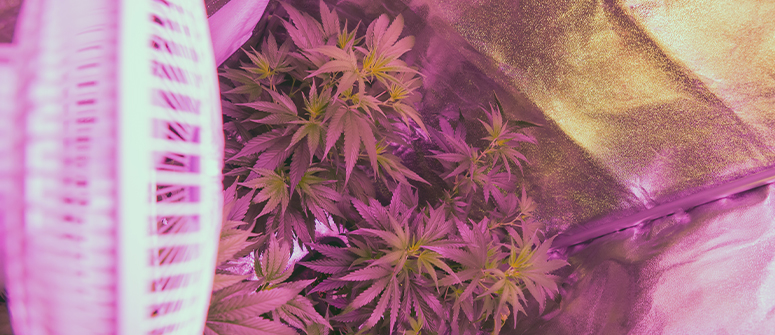
Each grower's approach to ventilating their grow space can vary slightly based on the size and layout of their space, as well as their budget. In smaller grows, sometimes an oscillating fan is all you’ll need. In hobby grow tents and small rooms, on the other hand, an inline extractor fan is usually recommended to help draw old, stagnant air out of the grow space, as well as an oscillating fan to help move some air ainside the room/tent.
Finally, in larger setups, growers might want to invest in intake fans to draw fresh, cool air into the grow space. This is especially true for growers using heat-producing HPS lights and/or growing a large number of plants.
Below, we’ll walk you through the basic components that comprise ventilation kits used for cannabis cultivation, and explain how they work to keep high-quality air circulating around your grow space.
Inline extractor
Inline extractors are used to extract stale air from the grow room. Their name is derived from the fact that they are typically installed in-line/path with the ducting either inside or connected to ducting. Growers typically lay their ducting to the effect that it starts high up in their tents or rooms, as hot, stagnant air automatically rises to the top of the grow space.
The amount of air an extractor fan can move is measured in cubic feet per minute (CFM) or cubic metres per minute (CMM). We will discuss how to calculate the CFM/CMM needed for a particular space later on in the article.
Oscillating fans
Simple oscillating fans (like those you use to ventilate your house) make a great addition to grow tents and rooms. They are very effective at air circulation, helping to ensure consistent temperature and humidity levels throughout the space.
Ducting
Ducting serves as a passageway for air to move in and out of your grow space. In cannabis cultivation, ducting is most commonly attached to an extractor fan to pull old, stagnant air out of the space.
Carbon filter (optional, but highly recommended)
Carbon filters are used to eliminate odour from the grow room. They are particularly important for individuals living in areas where cannabis cultivation is illicit or otherwise prohibited. Growers typically install their carbon filters at the beginning of their ducting, right below the ceiling of their grow space, minimising the chance of any odours escaping the ventilation system.
Intake fan (optional)
The opposite of extraction fans, intake fans are designed to draw fresh air into a grow room or tent. Unlike inline extractor fans, intake fans do not remove old, stale air from the grow space.
Passive and active intake
Passive and active intake are two methods of bringing fresh air into the grow room. Passive intake relies on natural airflow and is usually an acceptable approach to ventilating small hobby tents or micro grow setups in a cupboard or closet. Active intake, on the other hand, uses an intake fan to draw fresh air into a grow space. Active intake is recommended for larger grow setups.
A note on negative air pressure
Negative air pressure means that there is more air leaving your grow space than there is entering it. As a result, the air pressure inside your room or tent will be lower than the air pressure outside, creating a sort of “suction” effect that helps to:
- Ensure that air continues to be pulled into the grow space.
- Ensure that air doesn’t escape the grow room, helping to stabilise temperature and humidity levels as well as minimise odour.
How much ventilation does cannabis need?
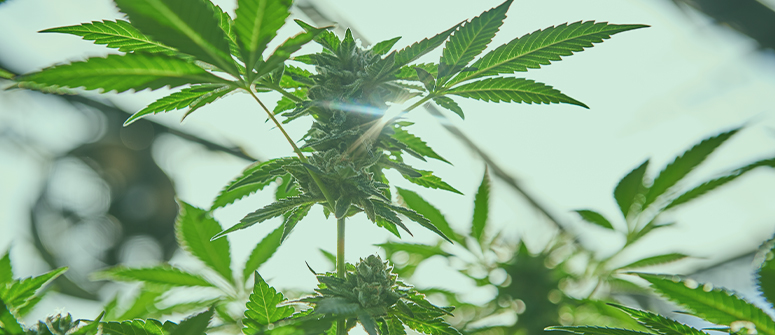
The amount of ventilation your grow room needs will largely depend on the size of your space, though the number of plants you grow, the environmental conditions in your area, and the type of grow light you use will also have an impact. As a general rule of thumb, you should aim for the air in your grow room to be fully replaced at least once per minute.
How to calculate ventilation requirements
To calculate the required ventilation for your grow space, you need to know the volume of the space in cubic feet or cubic metres. To do this, simply use the following equation:
length × width × height = volume of grow space
Note that fan capacity is usually measured in CFM (cubic feet per minute) so it is often best to measure your grow space using imperial feet and inches rather than metric units.
Ideally, you’ll want the air in your grow space to be completely renewed every minute. Hence, look for an exhaust with a CFM slightly greater than the volume of your grow space. If you plan to install intake fans, ensure their CFM is lower than your extractor fans to maintain negative air pressure. Your extractor should always be more powerful.
How to set up a ventilation system for cannabis
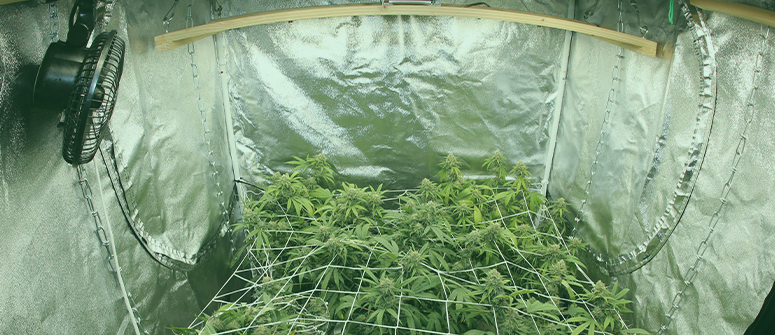
How you choose to set up your ventilation system will depend on the size and layout of your grow space. Here are some general guidelines to help you in three common cannabis grow spaces: tents, wardrobes/cabinets, and greenhouses.
Grow tent
Here are some steps you can follow to set up your grow tent ventilation successfully:
- First, gather the necessary equipment for your ventilation system. You will need an inline extractor fan and a carbon filter to effectively remove any odours, stale air and heat from your grow tent.
- Once you have your equipment, it's time to install the extractor fan and carbon filter. Depending on the available space, you can choose to install them outside of the grow tent to save space, or inside the tent to minimise noise. Make sure to follow the manufacturer's instructions for installation.
- After your extractor fan and carbon filter are installed, it's time to connect them using ducting. Ducting is an important component of a ventilation system since it helps to move air from one location to another. Make sure to use ducting that is the appropriate size for your setup and matches the diameter of the extractor connecting.
- Finally, install an oscillating fan inside your grow tent. This fan will help to circulate the air inside your tent, which is important for your plant's health, and to stave off pathogens. You can also use this fan to help regulate temperature and humidity levels inside your grow tent.
If you want to build your own grow tent, check out our guide for doing it on a budget.
Cabinet or wardrobe (micro-grow)
Ventilating a micro grow is super simple and can be done with little equipment and next to no money. To ventilate a micro grow in a cabinet, wardrobe, or cupboard, simply:
- Hang a small oscillating fan in the centre of the space to circulate air.
- Ventilate the cabinet or wardrobe manually by opening it a few times a day.
- Use a dehumidifier to control the humidity in your grow space.
Note: If you want to step things up a notch, consider installing computer intake and exhaust outtake fans into the walls of your cabinet or wardrobe. These fans are inexpensive and obviously unable to move as much air as dedicated grower fans, but they can work fine for micro grows.
Greenhouse
Ventilating a greenhouse can be fairly straightforward or somewhat complex depending on the size of the greenhouse, the material it’s made of, and the local climate. Most simple plastic greenhouses have ventilation flaps that can be opened to allow air to flow in and out of the greenhouse. If local weather conditions allow it, keeping these flaps open is one of the simplest ways to ventilate a greenhouse. Glass greenhouses can also be ventilated by opening windows or removing window panes, or simply leaving the door of the greenhouse open.
Some growers may prefer to take a more active approach to ventilating their greenhouse, especially those growing multiple plants or living in warm/humid areas. In these situations, you can ventilate a greenhouse in much the same way you would ventilate a grow room/tent, namely by using a combination of extractor fan and oscillating fans.
Providing proper airflow in the cannabis grow room
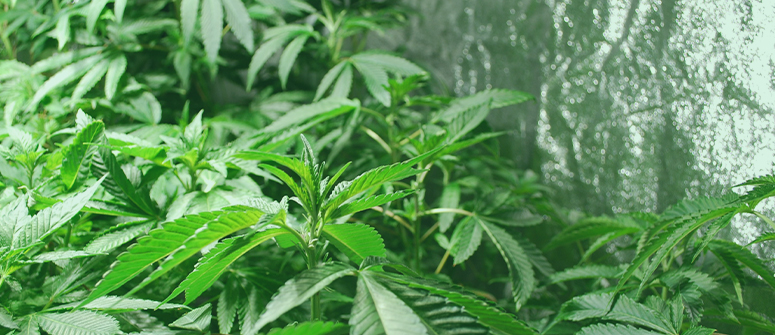
Proper ventilation is essential for a healthy cannabis grow. While small grows need little more than an oscillating fan, larger grow spaces are best set up with more complex ventilation systems consisting of an extractor fan, oscillating fans, a carbon filter, and, if need be, even intake fans and ducting.
By using the right tools and setting up a well-designed ventilation system, you can prevent a variety of issues and ensure that your plants thrive. Remember to maintain negative air pressure in the grow room and aim for at least one complete air exchange per minute. Happy growing!




